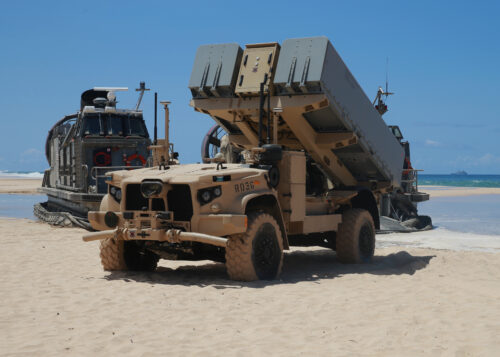The U.S. Marine Corps is on the hunt for a new ground-based, long-range cruise missile system. This system will provide precision kinetic fires using the Tomahawk Land Attack Missile (TLAM) and its Tactical Tomahawk Weapons Control System (TTWCS).

The service is interested in a system capable of integration into the U.S. Navy’s Tomahawk Weapons System (TWS) and compatible with other allied weapons and surveillance systems. A key requirement is the ability to deploy this system on a Remote Operated Ground Unmanned Expeditionary (ROGUE) platform, aligning with the Marine Corps’ expeditionary doctrine.
The ideal system will be self-contained, requiring minimal external support for operation. Additionally, it should encompass fire and weapons control, launch, reload, and resupply capabilities.
The Marine Corps is inviting industry to submit proposals outlining system integration with existing USMC platforms and any potential additional functionalities. Companies should provide detailed technical data, including range, targeting requirements, platform specifications, weight, software details, transportability, procurement costs, and sustainment estimates.
The ROGUE already serves as the foundation for the Navy/Marine Corps Expeditionary Ship Interdiction System (NMESIS).
This system employs the Naval Strike Missile (NSM) launcher unit (NLU) mounted on a Joint Light Tactical Vehicle (JLTV) chassis. The Marine Corps aims to leverage the ROGUE platform’s mobility and adaptability for the new cruise missile system.
By adding a long-range cruise missile capability to the ROGUE platform, the Marine Corps will significantly enhance its ability to conduct precision strikes against land and maritime targets. The service is prioritizing systems that can be rapidly deployed, maintained, and operated by Marine Corps personnel.
It’s important to note that this is a Request for Information (RFI) and does not guarantee a subsequent Request for Proposal (RFP).
For more information, hit the Source below